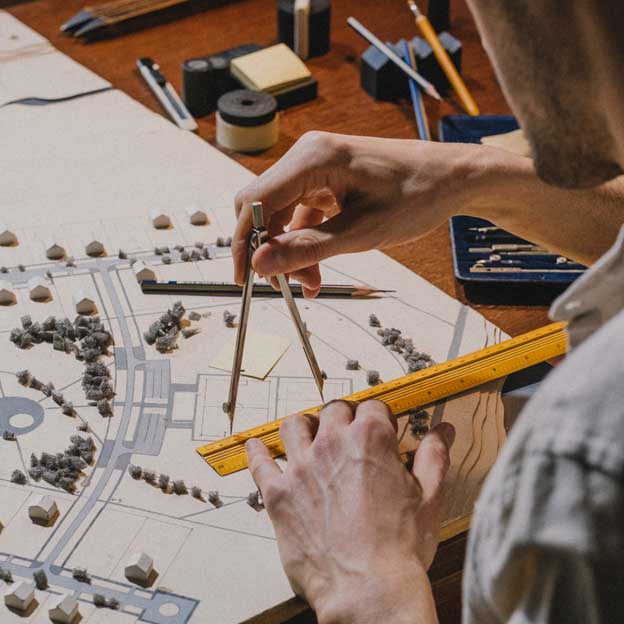Architecture is a fascinating field that combines art, science, and creativity to shape the built environment around us. From awe-inspiring skyscrapers to intricate historical structures, architecture plays a significant role in defining the character and functionality of our cities and communities. In this comprehensive article, we at Aditya College of Architecture, one of the best architecture college in Mumbai will delve into the world of architecture, exploring the artistry, innovation, and technical expertise that go into designing and constructing remarkable structures. Join us as we unravel the key elements of architecture, discuss influential architectural styles, and highlight the impact of sustainable design practices. Embark on a journey of discovery as we explore the art of architecture and the transformative power it holds in shaping the world we inhabit.
The Significance of Architecture
Architecture is more than just creating buildings; it has the power to shape our experiences, evoke emotions, and influence our interactions with the built environment. This section will highlight the significance of architecture in creating functional, aesthetically pleasing, and sustainable spaces. We will discuss how architecture affects our well-being, cultural identity, and sense of place.
Elements of Architectural Design
Architectural design involves a thoughtful integration of various elements. This section will explore the fundamental elements of architectural design, including form, space, light, materials, and texture. We will discuss how architects use these elements to create visually striking, functional, and harmonious structures that cater to human needs and aspirations.
Architectural Styles and Movements
Throughout history, architecture has evolved through various styles and movements. This section will provide an overview of influential architectural styles such as Classical, Gothic, Renaissance, Modernist, Postmodern, and Contemporary. We will discuss the defining characteristics, key architects, and notable examples of each style, showcasing the diversity and evolution of architectural expression.

Sustainable Design and Green Architecture
In an era of environmental consciousness, sustainable design and green architecture have gained significant importance. This section will explore the principles of sustainable design, including energy efficiency, use of renewable materials, waste reduction, and integration of green spaces. We will discuss how architects are incorporating sustainable practices into their designs to create environmentally responsible and energy-efficient structures.
The Role of Technology in Architecture
Technology has revolutionized the field of architecture, enabling architects to design, visualize, and construct buildings more efficiently and accurately. This section will explore the role of technology in architecture, including Building Information Modelling (BIM), computer-aided design (CAD), virtual reality (VR), and 3D printing. We will discuss how these advancements have enhanced the design process, improved collaboration, and allowed for better communication between architects, clients, and construction teams.
Architectural Education and Professional Pathways
Becoming an architect requires a combination of formal education, practical experience, and licensure. This section will discuss the educational pathways to becoming an architect, including undergraduate and graduate programs in architecture. We will explore the importance of practical training through internships and the role of professional organizations, such as architectural boards and associations, in ensuring ethical standards and professional development.
Iconic Architectural Landmarks
Architecture has given us iconic landmarks that have become symbols of cities and nations. This section will highlight some of the world’s most famous architectural landmarks, such as the Taj Mahal, Eiffel Tower, Sydney Opera House, and Burj Khalifa. We will discuss the architectural significance, historical context, and cultural importance of these structures, showcasing the enduring impact of exceptional architectural design.
The Future of Architecture
As we look to the future, architecture continues to evolve in response to changing societal needs, technological advancements, and environmental challenges. This section will explore emerging trends in architecture, including sustainable urban planning, adaptive reuse of existing structures, smart cities, and resilient design. We will discuss how architects are addressing pressing issues such as climate change, urbanization, and social equity through innovative design approaches.

Conclusion
Architecture is an art form that combines creativity, technical expertise, and a deep understanding of human needs and aspirations. From iconic landmarks to sustainable communities, architecture shapes the way we live, work, and interact with the world around us. We at Aditya College of Architect, one of the best architecture college in Mumbai believes that by embracing the elements of architectural design, incorporating sustainable practices, leveraging technology, and staying attuned to the evolving needs of society, architects have the power to create transformative spaces that inspire and uplift. Let us appreciate the art of architecture and recognize its profound influence in shaping our built environment, as we continue to explore new horizons and push the boundaries of design and construction.


